Discover the Majestic Beauty of Changbai Mountains: A Traveler’s Guide
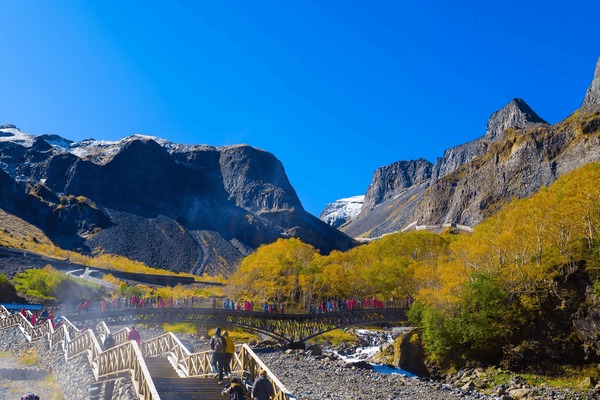
An Essential Guide to Visiting Changbai_Mountains
Nestled in the northeastern corner of China, the Changbai Mountains, or Changbai Shan, offer a breathtaking tapestry of natural wonders that beckon adventure seekers and nature lovers alike. This majestic mountain range, straddling the border between China and North Korea, is renowned for its stunning landscapes, rich biodiversity, and a plethora of outdoor activities that make it a must-visit destination.
From the striking blue waters of Tianchi (Heavenly Lake) perched atop the volcanic crater to the lush forests and cascading waterfalls that adorn its slopes, the Changbai Mountains are a paradise for photographers and explorers. The region is not merely a feast for the eyes; it is steeped in cultural significance, steeped in legends and history that resonate with the indigenous Korean and Manchu communities.
Whether you’re hiking through verdant valleys, soaking in natural hot springs, or marveling at the vibrant flora and fauna, each experience here is infused with a sense of tranquility and connection to nature. As you plan your journey to this enchanting locale, prepare to be captivated by its pristine beauty and the myriad of adventures that await you in the Changbai Mountains.
In This Guide
- An Essential Guide to Visiting Changbai_Mountains
- The Rich History and Legends of Changbai_Mountains
- Main Highlights: What You Absolutely Can’t Miss
- Planning Your Visit: A Practical Guide
- Tickets: Prices, Booking, and Tips
- How to Get There: A Complete Transportation Guide
- Local Cuisine and Accommodation Nearby
- Frequently Asked Questions
- Final Thoughts on Your Trip
The Rich History and Legends of Changbai_Mountains
The Changbai Mountains, or Changbaishan, hold a revered place in both Chinese and Korean cultures, steeped in mythology, natural beauty, and historical significance. This majestic mountain range, which straddles the border between China and North Korea, has been a source of inspiration and reverence for centuries.
Legendary Origins
In ancient times, the mountain was known as “Buxian Mountain” and various names have been attributed to it throughout history, including “Taibai Mountain” and “Gaimada Mountain.” However, it was during the Liao and Jin dynasties that the name “Changbai” became widely recognized. The term “Changbai” translates to “Forever White,” which references its perpetual snow-capped peaks and the mystical aura that envelops the region.
The mountains are steeped in legends, particularly within the context of the Manchu people, who regard Changbai as the sacred birthplace of their ancestors. According to legend, the Aisin Gioro clan, the founding family of the Qing Dynasty, emerged from the mountain’s mystical landscapes. This connection to royalty and divinity has imbued the mountains with an almost mythical status among the Manchu, who consider it the “God’s mountain.”
Cultural Significance
Throughout history, the Changbai Mountains have been a crucial geographical and cultural landmark. They served as a natural boundary between various ethnic groups and nations, influencing trade, migration, and cultural exchange. The area is rich in biodiversity and is home to many endemic species, further enhancing its status as a national treasure in China.
In addition to its natural beauty, the Changbai Mountains have been the site of numerous historical events. During the Qing Dynasty, the mountains were a strategic military site, and their rugged terrain provided both a refuge and a formidable barrier against invasions. The region’s unique geography has also made it a significant area for research and exploration, particularly in geology and ecology.
A Tapestry of Nature and Myths
The most iconic feature of the Changbai Mountains is the Tianchi, or Heavenly Lake, a crater lake formed by ancient volcanic activity. This serene body of water, often shrouded in mist, is believed to be a portal to the divine in local folklore. Many visitors come to witness its beauty, hoping to catch a glimpse of the lake’s clear waters reflecting the surrounding peaks.
Tales of mythical creatures, such as the “Changbai Mountain Dragon,” are frequently shared among locals, further enriching the mountains’ allure. These legends not only highlight the cultural significance of the region but also serve to enhance the sense of mystery that surrounds it.
Modern-Day Reverence
Today, the Changbai Mountains remain a popular destination for travelers and nature enthusiasts from around the globe. The area is recognized as a UNESCO World Heritage site, celebrated for its breathtaking landscapes that range from lush forests to stark volcanic craters. The combination of rich history, vibrant folklore, and stunning natural beauty makes the Changbai Mountains an essential stop for anyone seeking to understand the cultural and historical tapestry of Northeast Asia.
Travelers, whether drawn by adventure, spirituality, or simply the desire to experience nature’s grandeur, will find the Changbai Mountains a treasure trove of history, legend, and unparalleled beauty. As you stand amidst its towering peaks, you are not just witnessing a landscape but stepping into a realm where ancient myths and modern wonder intertwine.
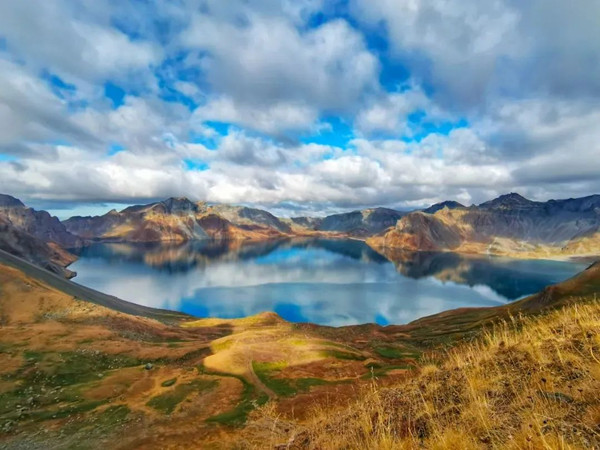
Changbai_Mountains.
Main Highlights: What You Absolutely Can’t Miss
The Changbai Mountains, a natural wonder straddling the border between China and North Korea, offer an array of breathtaking sights and exhilarating experiences. Here’s what you absolutely can’t miss during your visit to this stunning region.
1. Tianchi (Heaven Lake)
At the pinnacle of the Changbai Mountains lies Tianchi, or Heaven Lake, a crystal-clear volcanic crater lake that is often shrouded in mist. Revered as a sacred site, it offers stunning views that vary dramatically with the weather. To truly appreciate its beauty, aim to visit during clear weather, but be prepared for the possibility of clouds rolling in unexpectedly. The scenic hike around the lake provides several vantage points, allowing you to soak in its ethereal charm.
2. Changbai Waterfall
One of the tallest waterfalls in China, Changbai Waterfall cascades down a rugged cliff into a vibrant blue pool below. The power and beauty of the falling water make it a must-see spot. The surrounding area is adorned with lush greenery and unique volcanic rock formations, creating a picturesque backdrop for photos. Be sure to bring a camera to capture this stunning vista!
3. The Forest of the Valley
Exploring the Valley Forest is like stepping into a different world. This unique ecosystem is home to ancient trees and diverse flora that have thrived in the aftermath of volcanic activity. Walk along the wooden pathways that wind through this enchanting forest, where you may spot wildlife such as squirrels and various bird species. It’s a peaceful retreat that showcases the region’s natural beauty.
4. High Mountain Hot Springs
After a day of hiking and exploration, unwind in the natural hot springs nestled in the mountains. The geothermal waters are rich in minerals and provide a soothing experience amidst the stunning surroundings. Several resorts offer spa services and provide access to these hot springs, making it an ideal way to relax and rejuvenate.
5. The Changbai Mountain Scenic Area
Divided into several slopes, each with its unique characteristics, the Changbai Mountain Scenic Area features the North, South, and West slopes. The North slope is the most developed and accessible, boasting numerous attractions. The West slope, while requiring a bit of effort to reach, offers breathtaking views of Tianchi and is less crowded. The South slope is the least developed, providing a more pristine and untouched wilderness experience.
6. The Local Cuisine
No visit to Changbai Mountains would be complete without indulging in local delicacies. Explore the vibrant food scene, where you can sample Korean-style barbecue, hearty stews, and delightful snacks like the famous hot spring eggs boiled in mineral-rich water. Don’t miss the chance to try traditional dishes featuring locally sourced ingredients that reflect the region’s unique culinary traditions.
7. Seasonal Festivals
If your timing is right, consider attending one of the local festivals. The Changbai Mountain Flower Festival in June showcases the blooming flora, while the Autumn Maple Festival in September offers a spectacular display of fall colors. These events often feature cultural performances, local crafts, and delicious food, providing a deeper insight into the region’s rich heritage.
8. Stunning Photography Opportunities
With its diverse landscapes that range from snow-capped peaks to lush valleys, the Changbai Mountains are a photographer’s paradise. Golden autumn leaves, vibrant spring flowers, and dramatic winter scenes offer endless opportunities to capture nature’s beauty. Be sure to bring your camera, as you’ll want to document every stunning view!
9. Outdoor Activities
For adventure seekers, Changbai Mountains offer a plethora of outdoor activities, including hiking, skiing, and mountain biking. The region’s well-marked trails cater to various skill levels, and the snow-covered slopes in winter are perfect for skiing enthusiasts, attracting visitors from around the world.
Conclusion
Whether you’re drawn by the natural beauty, the rich cultural experiences, or the exhilarating outdoor activities, the Changbai Mountains promise an unforgettable adventure. Make sure to include these highlights in your travel itinerary to fully appreciate all that this remarkable destination has to offer!
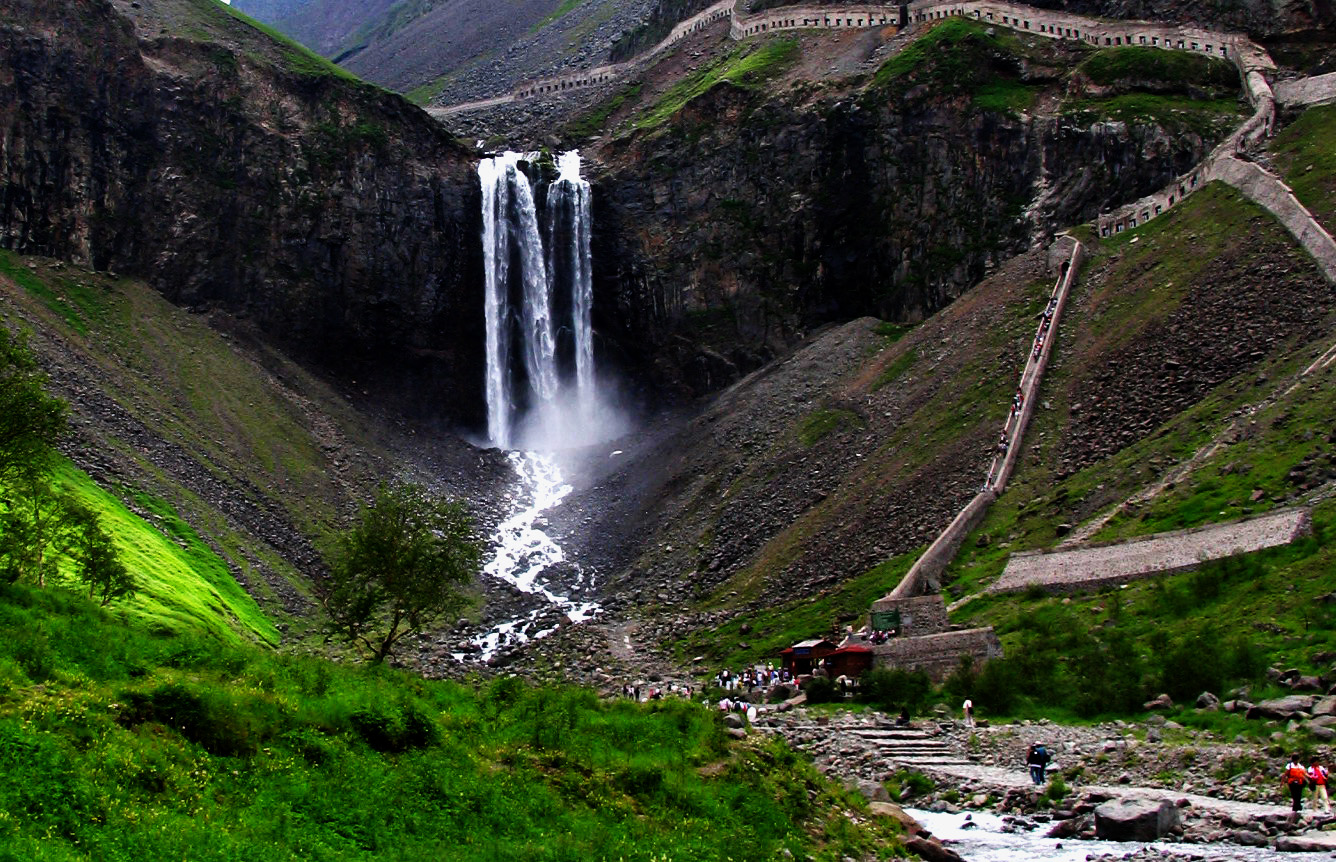
Changbai_Mountains.
Planning Your Visit: A Practical Guide
Visiting the Changbai Mountains is a thrilling adventure, offering breathtaking landscapes, rich biodiversity, and a glimpse into the cultural heritage of the region. To make the most of your trip, here’s a practical guide covering everything from the best time to visit to essential travel tips.
Best Time to Visit
The ideal months for exploring the Changbai Mountains are August to October. During this period, the weather is mild, and the scenery is at its most vibrant with lush greenery and colorful autumn foliage. If you’re interested in winter sports, plan your visit between November and March, when the region transforms into a snowy wonderland, perfect for skiing and snowboarding.
Getting There
By Air: The Changbai Mountains are accessible via Changbai Mountain Airport, which is the first forest tourism airport in China. It is approximately 15 km from the West Scenic Area and around 120 km from the North Scenic Area. Alternatively, you can fly to Yanji Airport and take a high-speed train to reach the North Scenic Area.
By Train: The high-speed train service connects major cities to the Changbai Mountains region, making travel quick and convenient. Once you arrive at the nearest station, local transport options (taxis or buses) are available to take you to the scenic areas.
By Car: If you prefer driving, the region is well-connected by highways. The journey to the North and West Scenic Areas is straightforward, and having your own vehicle allows for flexibility to explore at your own pace.
Choosing Your Scenic Area
The Changbai Mountains have three main scenic areas: North, West, and South. Each offers unique experiences:
-
North Slope: This area is the most developed and popular, featuring iconic attractions like the famous Heavenly Lake (Tianchi) and breathtaking waterfalls. It’s ideal for first-time visitors.
-
West Slope: Known for its stunning views of the Heavenly Lake, the West Slope is less crowded and offers a more tranquil experience. The journey to the peak involves climbing numerous steps, providing a rewarding challenge.
-
South Slope: The South area is less frequented and known for its pristine landscapes. Recently opened, it features beautiful ecological scenery, including the breathtaking Yalu River Grand Canyon.
Entrance Fees and Ticketing
- Entry to the Changbai Mountain Scenic Area is approximately 125 CNY (about $20 USD). Tickets are necessary for each scenic area and are generally valid for a single day.
- Reservations are recommended, especially during peak seasons. Tickets can be purchased online or at the entrance, but it’s advisable to book in advance to avoid long queues.
Transportation Within the Scenic Areas
- Eco-Friendly Shuttle Buses: These are available within the scenic areas at a price of 85 CNY per person, allowing you to hop on and off at various attractions throughout the day.
- Off-Road Vehicles: For the North Slope, off-road vehicles are necessary to reach higher elevations. Expect to pay around 80 CNY for this service.
Accommodation Options
For a comfortable stay, consider these areas:
- Erdao Baihe Town: Located near the North Slope, this town offers a range of hotels and guesthouses, making it a convenient base for exploration.
- Fusong County: Close to the West Slope, it also offers various lodging options, from luxury hotels to cozy guesthouses.
- Booking Tips: During high season, accommodations can fill up quickly. It’s advisable to book your stay well in advance to secure the best options.
Local Cuisine
Exploring the local food scene is a must. The Changbai Mountains are known for their Northeast Chinese and Korean influences. Don’t miss trying:
- Ginseng Dishes: The region is famous for ginseng, and you’ll find it featured in many local dishes.
- Hot Pot and Barbecue: Enjoy hearty meals after a day of hiking with traditional hot pot or sizzling barbecue.
- Local Specialties: Be sure to try the 温泉鸡蛋 (hot spring eggs), which are cooked in the geothermal waters for a unique flavor.
Essential Tips
- Weather Preparedness: The weather can change rapidly, especially at higher elevations. Dress in layers and carry waterproof gear, particularly in the summer months when rain is more common.
- Altitude Considerations: Some areas are at high altitudes; if you’re not acclimated, take it slow and stay hydrated.
- Cultural Respect: The Changbai Mountains hold significant cultural importance, particularly to the Korean minority. Be respectful of local customs and traditions during your visit.
Final Thoughts
A trip to the Changbai Mountains promises unforgettable experiences amid some of the most stunning natural scenery in China. With careful planning and an adventurous spirit, you’re sure to have a memorable journey exploring this magnificent region. Whether you’re hiking to the Heavenly Lake, soaking in the local culture, or simply enjoying the breathtaking views, the Changbai Mountains are a destination that will leave a lasting impression.
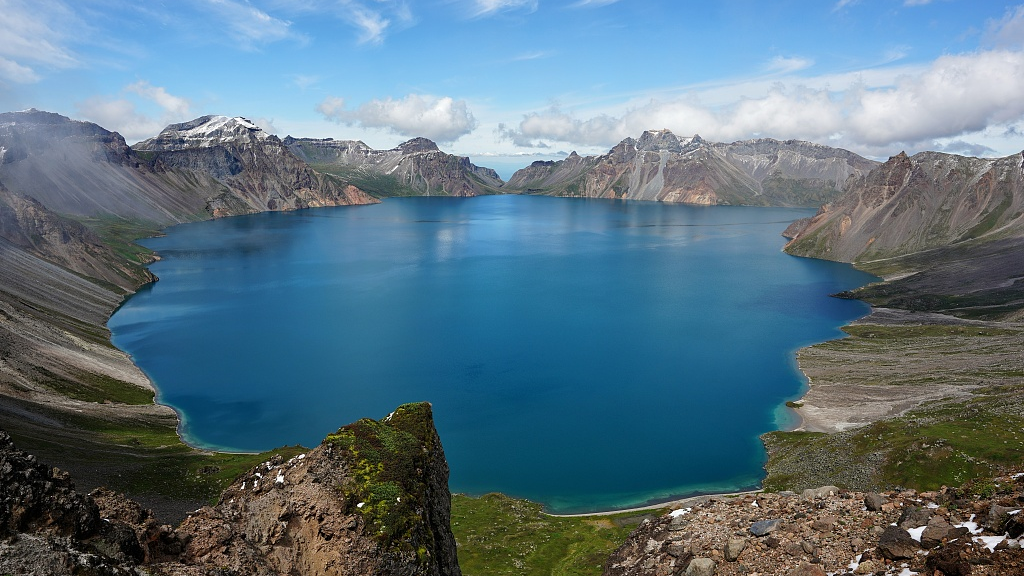
Changbai_Mountains.
Tickets: Prices, Booking, and Tips
When planning your visit to the breathtaking Changbai Mountains, understanding the ticketing process, prices, and useful tips can greatly enhance your experience. Here’s a comprehensive guide for international travelers looking to explore this stunning natural wonder.
Ticket Prices
The Changbai Mountains feature several scenic areas, primarily divided into three main slopes: North, West, and South. Each area requires a separate ticket for entry.
-
North Slope: The entrance fee is approximately ¥125 (around $18 USD) per person. This ticket allows you to explore various attractions within the North Slope, including the famous Heavenly Lake and waterfalls.
-
West Slope: Similar pricing applies here, with tickets also around ¥125. The West Slope is known for its expansive views of Heavenly Lake and the scenic canyon.
-
South Slope: This area operates on a reservation basis with a limited daily capacity of 1,000 visitors. Tickets are available through the official Changbai Mountain WeChat or the “Smart Changbai” mini-program. Pricing is comparable to the other slopes, but reservations must be made at least two days in advance.
Discounts and Free Entry
Several discounts are available for specific groups:
-
Free Entry: Children aged 6 and under, seniors aged 65 and over, and certain groups such as disabled veterans and guides with valid credentials can enter for free.
-
Half-Price Tickets: Available for minors (ages 6-18), seniors aged 60-64, full-time students, and active military personnel.
Booking Tips
-
Advance Reservations: For the South Slope, it’s crucial to book tickets online ahead of your visit due to the limited capacity. You can reserve tickets up to three days in advance.
-
Plan for Peak Times: The best time to visit is from August to October, when the weather is mild and the scenery is vibrant. However, this is also peak tourist season, so booking in advance is highly recommended.
-
Check Opening Hours: The Changbai Mountains typically open around 6:30 AM and close by 3:00 PM. Ensure to check the specific opening hours for the area you wish to visit, as they may vary.
-
Stay Informed: Regularly check the official Changbai Mountain website or local travel groups for any changes in ticket prices, entry regulations, or special promotions.
Additional Tips
-
Transportation: Plan your travel to and from the mountain slopes. Shuttle buses and eco-friendly vehicles operate within the park, but be prepared for some areas that require additional vehicle changes for access.
-
Weather Preparedness: The weather can change rapidly, particularly at higher altitudes. Dress in layers and be prepared for rain or sudden drops in temperature.
-
Cash and Payment Options: While many places accept mobile payments (like WeChat Pay), having some cash on hand for smaller vendors or services is advisable.
By keeping these ticketing details and tips in mind, you can ensure a smooth and enjoyable visit to the magnificent Changbai Mountains, where stunning landscapes and rich biodiversity await you.
How to Get There: A Complete Transportation Guide
Reaching the majestic Changbai Mountains, known for their stunning landscapes and rich biodiversity, requires a bit of planning, especially for international travelers. This guide will help you navigate your way to this breathtaking destination in northeastern China.
By Air
The closest airport to Changbai Mountains is the Changbaishan Airport (NBS), which is the first forest tourism airport in China. It is located about 15 kilometers from the West Slope of Changbai Mountain, 80 kilometers from the Erdaobai River Town, 120 kilometers from the North Slope, and 135 kilometers from the South Slope.
For international travelers, Yanji Chaoyangchuan Airport (YNJ) is another option. From Yanji, you can take a high-speed train to reach the North Slope of the mountains.
By Train
The high-speed rail network in China is extensive and efficient. You can take a high-speed train to Yanji or Changchun and then transfer to a local train or bus service that heads toward the Changbai Mountains.
- From Yanji: You can find direct bus services to the Changbai Mountain North Slope.
- From Changchun: High-speed trains frequently run to Yanji, where you can then continue by bus.
By Bus
If you prefer to travel by bus, both Yanji and Changchun offer bus services to the various slopes of Changbai Mountain. Buses run frequently, especially during the peak tourist season from August to October.
- From Yanji: Buses to Erdaobai River Town, which is close to the North Slope.
- From Changchun: Buses depart regularly to the North and West Slopes.
By Car
For those who enjoy road trips, renting a car can provide the ultimate flexibility. Major highways connect to the Changbai Mountain area:
- From Changchun: Take the G12 expressway, which provides a scenic drive towards the Changbai Mountains.
- From Yanji: Follow the scenic route via G204, which takes you through beautiful landscapes and charming towns.
Local Transportation
Once at the Changbai Mountain scenic area, accessing the various slopes requires some additional arrangements:
- Environmental Buses: The scenic area operates an eco-friendly bus service that transports travelers to key attractions. The buses run every 15 minutes and are included with your entrance ticket.
- Off-road Vehicles: Due to the rugged terrain, especially in the North Slope, you may need to transfer to specialized off-road vehicles to reach certain viewpoints.
Important Tips
- Advance Booking: It’s advisable to book your transportation in advance, especially during peak seasons.
- Tickets and Entry: Entry to the various slopes requires separate tickets. Keep in mind that tickets may need to be booked online in advance, particularly for the South Slope which has limited daily admissions.
- Accommodation: Consider staying in nearby towns like Erdaobai River or Yanji for convenience, especially if you plan to explore multiple slopes.
By planning your journey carefully and utilizing the various transportation options available, you can ensure a smooth and enjoyable visit to the breathtaking Changbai Mountains. Prepare to be awed by nature’s beauty as you explore this stunning region!
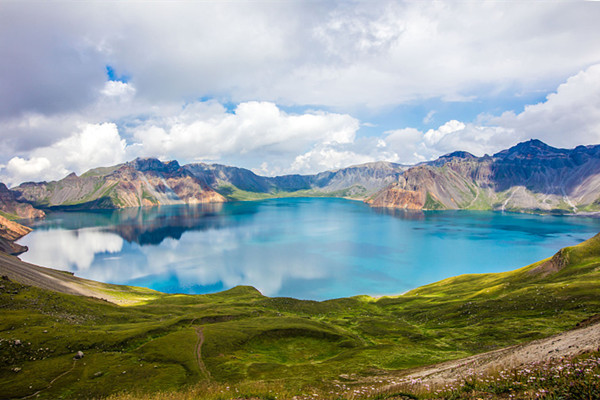
Changbai_Mountains.
Local Cuisine and Accommodation Nearby
When exploring the breathtaking Changbai Mountains, you’ll not only be captivated by the stunning scenery but also by the local culinary delights and accommodation options that enhance your journey. Here’s a taste of what you can expect during your visit.
Local Cuisine
The Changbai Mountains region is renowned for its unique gastronomic offerings, blending traditional Northeast and Korean flavors. Here are some must-try dishes:
-
Korean Barbecue: A popular choice in the area, these grilled dishes are often made with marinated meats, paired with an array of fresh vegetables and delightful dipping sauces. The smoky flavor combined with the rich marinade creates an unforgettable meal.
-
Korean Pancakes (Jeon): These savory pancakes are filled with vegetables, seafood, or meat, and are a perfect snack or side dish. They are crispy on the outside and soft on the inside, often served with a soy-based dipping sauce.
-
Dog Meat Soup (Bokkeumbap): Although it may sound unusual to some, this dish is considered a delicacy in local culture and is known for its hearty flavor and nutrition.
-
Changbai Mountain Delicacies: Try the famous Changbai Mountain banquet, which features dishes made from local ingredients, including wild mushrooms and mountain herbs that showcase the region’s natural bounty.
-
Wild Ginseng and Mountain Products: The area is known for its ginseng, wild mushrooms, and other herbal products, making for excellent souvenirs or ingredients to take home.
For a dining experience, venture to Erdao Baihe Town, where you’ll find a variety of restaurants offering both traditional Northeast and Korean cuisine. Be sure to sample Korean-style cold noodles (Naengmyeon), especially refreshing in the summer months.
Accommodation Options
Finding the right place to stay enhances your experience in the Changbai Mountains. Here are some recommended accommodations nearby:
-
Changbai Mountain Resort: Located near the North Slope entrance, this resort offers comfortable rooms with stunning views of the mountains. It features amenities such as a spa, restaurant, and easy access to hiking trails.
-
Baihe International Hotel: Situated in Erdao Baihe Town, this hotel provides a mix of modern comforts and traditional decor. Guests can enjoy on-site dining options and proximity to local attractions.
-
Jinjiang Woodhouse Village: For a more rustic experience, consider staying in one of the charming wooden cabins in this village. This option allows you to connect with nature while enjoying the comforts of home.
-
Tianmu Hot Spring Resort: If relaxation is what you seek, this resort features natural hot springs and spa services. It’s located about a 20-minute drive from the mountain, making it a great base for exploring during the day and unwinding at night.
-
Guesthouses and Homestays: For a more intimate experience, look for local guesthouses or homestays in the surrounding villages. These often provide home-cooked meals and personalized service, allowing you to immerse yourself in local culture.
Whether you’re savoring the flavors of the region or resting in comfortable lodgings, the Changbai Mountains promise an enriching adventure that lingers long after your visit. Enjoy the beauty, the food, and the warm hospitality that this unique area has to offer!
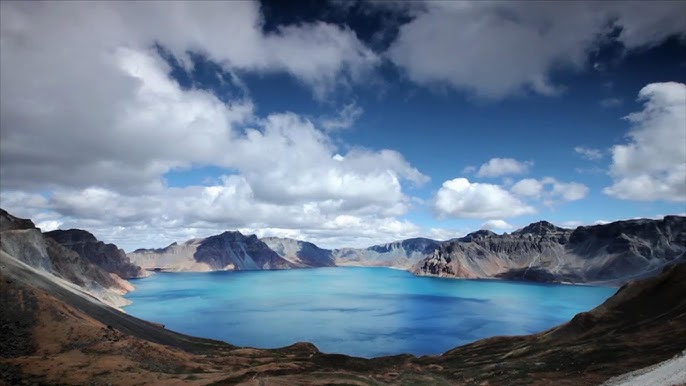
Changbai_Mountains.
Frequently Asked Questions
Frequently Asked Questions for Travelers to Changbai Mountains
-
What are the best times to visit Changbai Mountains?
The ideal time to visit is from June to September, with July and August being the peak tourist months. The weather is generally pleasant, making it perfect for outdoor activities. If you’re into winter sports, visit between November and March for the best snow conditions. -
How can I get to Changbai Mountains?
You can fly into Changbaishan Airport, which is located approximately 15 kilometers from the West Slope and about 120 kilometers from the North Slope. Alternatively, you can reach the area via high-speed trains to Yanji, followed by bus or taxi to the mountain. -
Are there any entrance fees for the scenic areas?
Yes, entrance fees apply to the different areas of Changbai Mountains. The fee for the North and West Slopes is around 125 RMB per person. It’s important to note that each slope requires separate tickets, and discounts are available for children and seniors. -
What should I wear when visiting?
The temperature can vary greatly depending on the elevation and time of year. In summer, bring layers, as it can be cool at higher altitudes. In winter, prepare for extremely cold conditions with heavy winter gear. Don’t forget sunglasses to shield your eyes from the glare of the snow! -
What are the must-see attractions in Changbai Mountains?
Key attractions include the stunning Tianchi (Heavenly Lake) at the summit, the spectacular Changbai Waterfall, and the unique highland gardens. Each slope offers different perspectives and experiences, so plan to visit more than one if time allows. -
Is it easy to find accommodation near Changbai Mountains?
Yes, there are various accommodation options ranging from hotels to guesthouses in nearby towns like Erdaobaihe and Fusong. It’s advisable to book in advance, especially during peak season, as places can fill up quickly. -
Are there dining options within the scenic areas?
Dining options are available, but they may be limited and pricier within the scenic areas. For a wider selection and better prices, consider dining in nearby towns, where you can find local specialties like Korean BBQ and various northeastern dishes. -
What activities can I enjoy at Changbai Mountains beyond sightseeing?
In addition to hiking and sightseeing, visitors can enjoy skiing in winter, hot spring baths, and exploring the unique flora and fauna of the area. Don’t miss the chance to try local delicacies, including eggs boiled in hot springs, a Changbai specialty!
Final Thoughts on Your Trip
As your journey through the stunning landscapes of the Changbai Mountains comes to an end, reflect on the memories created amidst its breathtaking beauty. Each peak, lake, and forest tells a story steeped in nature’s grandeur, inviting you to explore, appreciate, and connect with the world around you. From the majestic Tianchi Lake—an iconic symbol of serenity—to the invigorating hot springs and diverse wildlife, this destination captivates the heart and soul of every traveler.
The local culture, rich in traditions and flavors, adds an unforgettable layer to your experience. Don’t forget to savor the unique culinary delights and engage with the warm-hearted locals who share the mountain’s heritage. Whether you trekked the rugged trails, relaxed in soothing hot springs, or captured the vibrant flora during the seasonal festivals, the Changbai Mountains offer an adventure like no other.
As you leave, take with you the spirit of the mountains—an enduring reminder of the beauty that lies in nature and the memories made in its embrace. Until your next adventure, may the echoes of the Changbai Mountains resonate in your heart, inspiring you to seek out more of the world’s wonders. Safe travels!